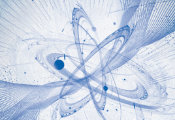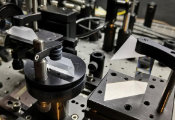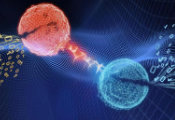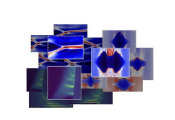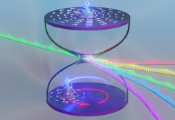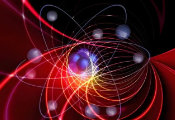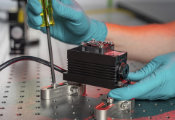Unveiling the Relationship Between Electrons and Photons
August 26, 2024 -- A study coordinated by the University of Trento with the University of Chicago proposes a generalized approach to treat the interactions between electrons and light. In the future, it may contribute to the development of quantum technologies but also to the discovery of newstates of matter. The study has been published in Physics Review Letters.
Understanding the interaction between quantum particles is crucial in the discovery of new molecules or materials that can be used for novel technological or medical applications. For instance, when molecules or chemical compounds interact with light, their physical properties can change substantially. Bearing this in mind, the new field of polaritonic chemistry aims to trigger new chemical reactions using light as a catalyst. More generally, controlling light-matter interactions provides a way to manipulate and synthesize new quantum matter.
The research work, as always, progresses by making hypotheses that must be verified. But when the object of study is a quantum system involving a multitude of different elements, i.e. electrons, photons, phonons, the situation can be even more complicated. It is difficult to accurately calculate the "wave function" of such a system, that is, a function that contains the relevant physical information to make accurate predictions about the behaviour of many quantum particles of more than one type.
A group of researchers from the University of Chicago, coordinated by Carlos Leonardo Benavides-Riveros, a research fellow at the Department of Physics of the University of Trento, and David A. Mazziotti from the University of Chicago, made a contribution to this topic.
They started with an "ansatz", a theoretical prescription, that can help them predict the interactions among the particles in a many-body quantum system on a quantum computer. Then they generalized this ansatz to treat systems that contain more than one type of quantum particle, e.g., systems that contain not only electrons but also photons and/or phonons.
To demonstrate, the researchers have simulated a universal quantum algorithm on an IBM quantum computer, with zero theoretical error.
And that is the novelty of this study: the researchers have developed a single approach that can be used to generate exponential prescriptions ("ansatzes") for many-body quantum system with more than one type of particle that, when is implemented on quantum devices, produces exact wave functions.
According to physicists, this solution also opens up new perspectives in the study of the states of matter.
“Quantum systems as molecules or solids, as we find them in nature, never contain only electrons. Many fascinating properties can be created or supressed when light interact with them”, explains Carlos Leonardo Benavides Riveros. "What we did,” he continues, “was to introduce other quantum particles beyond electrons such as particles of light, commonly known as photons. And by following our universal formulation of the problem we can understand the structure of its wave function and hence, its physical properties."
“Because the ansatz is particularly suitable for quantum computers,” David Mazziotti explains, “the advance opens new possibilities for using quantum computers to model important molecular problems in light-matter interaction, such as occur in polaritonic chemistry.”



